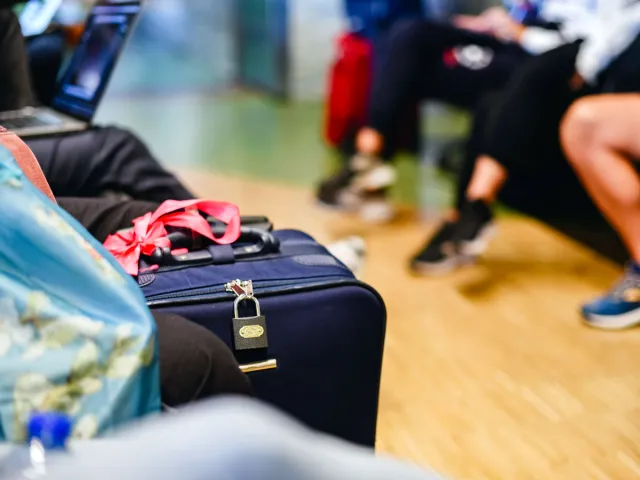Most European vacations don’t come cheap, and they’re made all the more costly by the various taxes and fees you may encounter along the way. This might include foreign transaction fees, tourist taxes for visiting certain cities, and value added tax (VAT) on goods and services purchased across the continent. While European residents must pay the VAT, the good news is that foreign visitors can seek out a potential refund on certain purchases. Here’s how you can get cash back in your pocket on your next trip to Europe.
What Is VAT?

Value added tax (VAT) is an indirect tax levied by 175 world countries, including the 27 member states of the European Union and other nations on the European continent. This is comparable to sales tax in the United States, which is levied on goods instead of a VAT.
The exact percentage of VAT varies among countries. Hungary levies the highest VAT in Europe at 27%, while Switzerland is on the lowest end at just 8.1%. Throughout the EU, the minimum VAT rate is 15%, and there is no maximum; the average VAT rate is 21.8%.
VAT helps generate government revenue by imposing a flat rate on goods and services at every stage of the supply chain, meaning that VAT is paid several times. Usually, it’s paid first by the manufacturer for acquiring raw materials, then the retailer for buying those manufactured goods, and finally the customer when buying those goods for personal use.
To better understand how VAT works, here’s a hypothetical example for a T-shirt business in France, where the VAT is set at 20%. At first, the T-shirt manufacturer pays €1 for raw materials, which comes with a 20-cent VAT for a total cost of €1.20. A retailer then buys the shirt from the manufacturer for a cost of €6 (€5 for the shirt itself plus a €1 VAT), which allows the manufacturer to recover the VAT it initially paid, while still passing along 20% of its gross margin to the government. Finally, the retailer sells the shirt for €10 to a consumer, who has to pay an additional €2 VAT. Given this is usually the last step in the supply chain, the consumer is left paying the full amount of the VAT.
VAT Refund Eligibility

As a foreign visitor to Europe, there are several considerations to determine whether you’re eligible for a VAT refund. First, it’s worth noting that the European Union has certain rules regarding VAT refunds for all member states, so requirements may differ if you’re visiting a non-EU nation. But despite differences between EU and non-EU countries, there’s generally a similar process to follow.
Rules for VAT Refunds
• VAT refunds only apply to physical goods that you’re taking back home from Europe in your own personal luggage, so this excludes purchases like hotels or meals.
• VAT refunds are applicable only to goods bought within the previous three months.
• Each individual transaction must surpass a minimum purchase amount (in local currency), and each country can impose a different minimum threshold to determine eligibility. For example, in France, the minimum purchase is €100.
• You must be able to provide proof of current permanent residence outside the EU or Europe, whether you’re a foreign-born tourist or a European national living abroad.
How To Claim a VAT Refund

The VAT refund process begins when making an eligible purchase at a European retailer. If you buy something that surpasses the minimum threshold, be sure to request a VAT refund form from the retailer. While some retailers don’t participate in the process, many tourist-oriented shops do. If you’re unsure, just ask a store employee whether or not they provide VAT refund forms.
In order to fill out the refund form, the retailer will ask for your passport and other pertinent info — so make sure to bring your passport when you shop.
Once the form has been filled out, check that all the information is accurate, and make sure that the form is signed by both you and the retailer. The form will detail the amount of the purchase and how much you will get back. Keep this form in a safe place and hold onto any receipts, as you’ll need them at the airport.
Some stores may process the VAT refund for you on the spot, on the condition that you mail back stamped customs forms later (we’ll get to that shortly).
In most cases, though, you’ll need to visit the customs or tax refund office at the airport with your VAT refund form that was provided by the retailer. Typically, these are located landside, before you pass through security, and are marked with a sign for tax refunds, but they can also be located behind security.
Assuming that your documents are in order and that you haven’t already received a refund from the retailer, the customs officer will stamp your form, and the VAT refund will be processed at the airport (though there may be a small service fee). The refund will either be immediately provided to you in local currency or refunded to your credit card in a few business days.
Helpful Tips for Getting Your VAT Refund
• Make sure you arrive at the airport with plenty of time to locate the office and go through the process to receive your refund.
• The customs officer may ask to see the items you’ve purchased, so you may want to carry your items with you instead of checking them in your bag if the refund office is located post-security.
• Common reasons your form may be rejected include not being signed by the retailer, your goods not being personal in nature, or not being able to physically present your goods to the officer.
• Be sure to visit the tax refund office before leaving Europe, as there’s no way to retroactively refund you after you get back to the United States (or wherever home is).
• If you’re heading to another EU country before going home, you’ll submit the refund at the last country before you leave the EU. For countries not in the EU, you’ll need to do this in the country where you purchased the goods.
• In the event that you were already refunded by the retailer, you’ll need to mail the stamped customs forms back to the retailer (either from the airport or after you land) within the three-month purchase window. If you don’t mail back the forms, the refund will be canceled and you’ll be charged the full VAT amount.
More from our network
Daily Passport is part of Inbox Studio, which publishes content that uplifts, informs, and inspires.






















